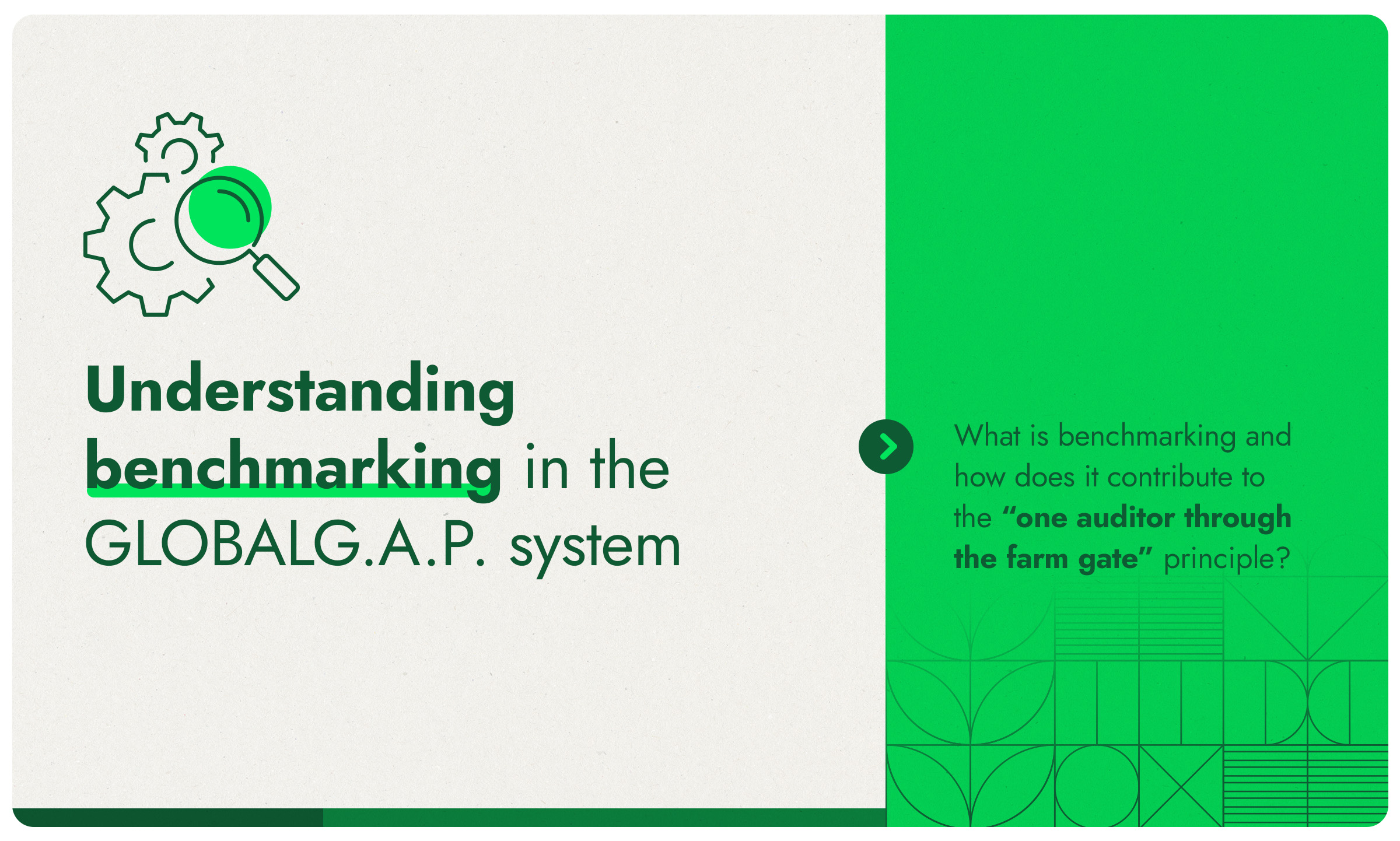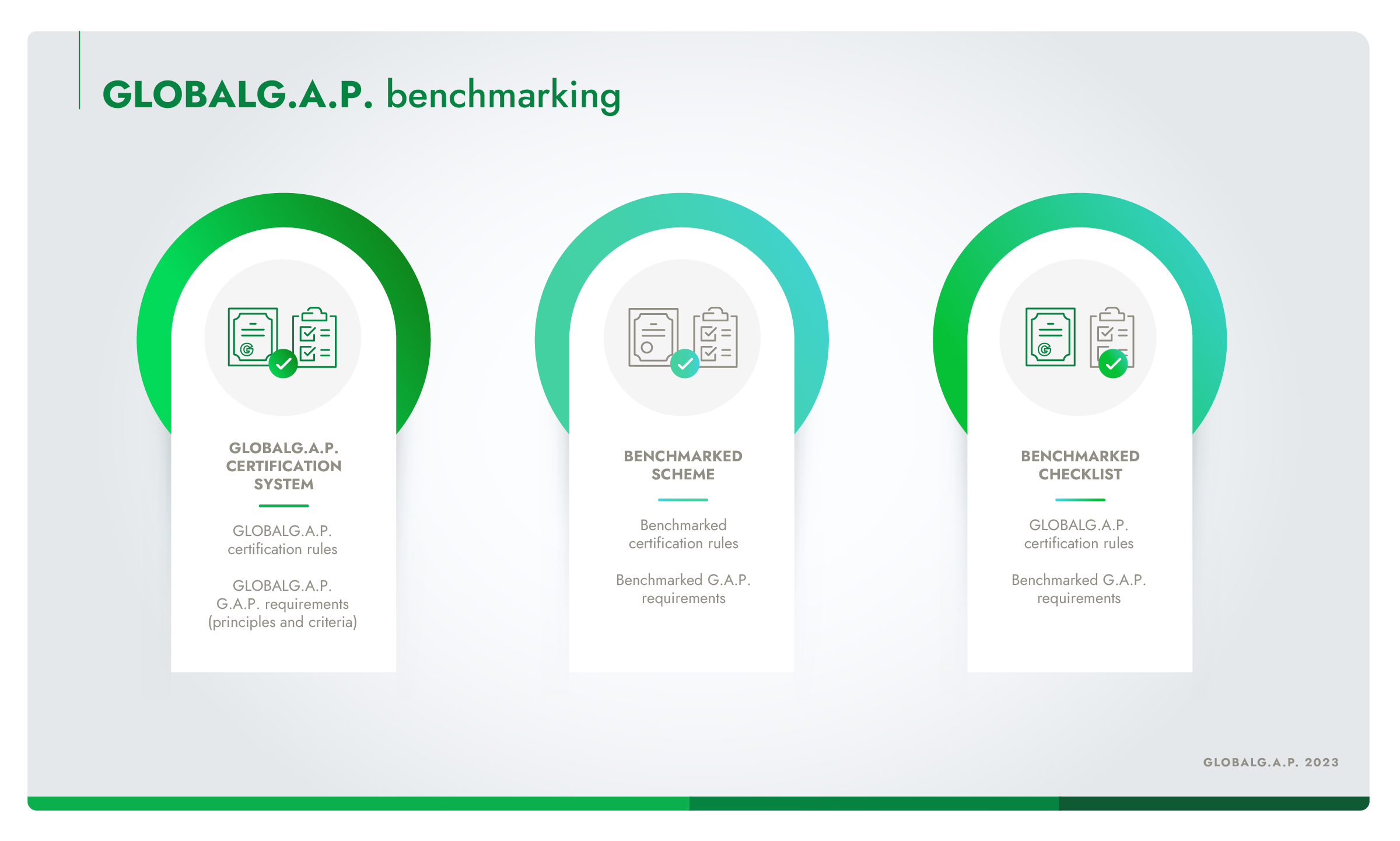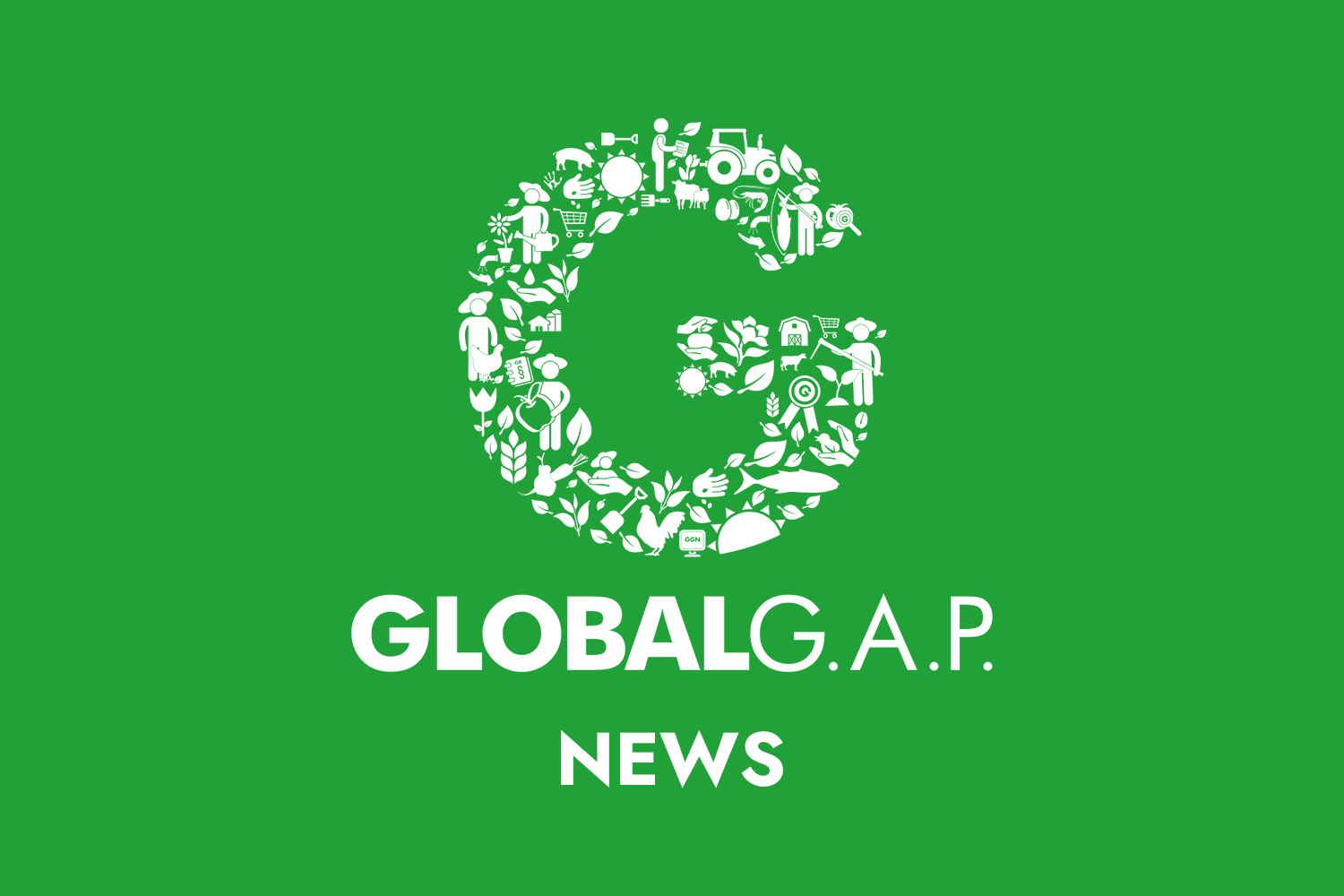25 February 2025
Understanding benchmarking in the GLOBALG.A.P. system
What is benchmarking and how does it contribute to the “one auditor through the farm gate” principle? Which other national schemes are benchmarked to GLOBALG.A.P. solutions, and which GLOBALG.A.P. standards have achieved international benchmarking recognition? Read on to find out.

An introduction to benchmarking in the GLOBALG.A.P. system
Benchmarking is the process of evaluating technical alignment of one standard to another. Within the GLOBALG.A.P. system, benchmarking follows two distinct streams, both of which aim to recognize alignment across various standards and schemes:
1) International benchmarking: GLOBALG.A.P. standards and add-ons undergo benchmarking to other programs with the aim of achieving international recognition from initiatives such as the Global Food Safety Initiative (GFSI), Global Seafood Sustainability Initiative (GSSI), and others.
2) GLOBALG.A.P. benchmarking: different certification systems/certification program owners apply to have their scheme or checklist formally recognized as equivalent to a GLOBALG.A.P. scheme.
Find out more about these benchmarking streams below.
International benchmarking
International benchmarking reduces duplicate audits by recognizing standards with similar requirements. This assures buyers of equivalence and allows producers to meet buyer demands without repeated audits covering the same criteria.
For example, many buyers require certification to a scheme recognized by the Global Food Safety Initiative (GFSI)). To support producers worldwide, GLOBALG.A.P. benchmarks certain standards against GFSI, ensuring that the food safety elements of that standard align with industry expectations.
International recognitions for GLOBALG.A.P. standards
Global Food Safety Initiative (GFSI)
Integrated Farm Assurance (IFA) version 6 GFS for aquaculture – Fish, crustaceans, molluscs, seaweed benchmarked to GFSI AII – Farming of fish and seafood.
Harmonized Produce Safety Standard (HPSS) version 1.2 benchmarked to GFSI scopes BI – Farming of Plants (other than grains and pulses) and BIII – Pre-process Handling of Plant Products.
IFA v6 GFS for fruit and vegetables benchmarked to GFSI scopes BI – Farming of Plants (other than grains and pulses) and BIII – Pre-process Handling of Plant Products.
Produce Handling Assurance (PHA) standard version 1.2 benchmarked to GFSI BIII – Pre-process Handling of Plant Products.
Global Sustainable Seafood Initiative (GSSI)
IFA v5.4-1 GFS for aquaculture – Fish, crustaceans, molluscs, seaweed
Floriculture Sustainability Initiative’s (FSI) basket of standards
IFA v6 Smart for flowers and ornamentals recognized by FSI – GAP basket.
Impact-Driven Approach to Sustainability (IDA) add-on and module recognized by FSI – Environmental basket.
Ethical Charter Implementation Program (ECIP)
IFA v6 plus GLOBALG.A.P. Risk Assessment on Social Practice (GRASP) version 2.
Sustainability Initiative Fruit and Vegetables (SIFAV) by IDH.
Recognizes IFA v6 plus Sustainable Program for Irrigation and Groundwater Use (SPRING) version 2.
World Wildlife Fund (WWF) Spain
Recognizes IFA v6 plus SPRING v2.
Farm Sustainability Assessment from SAI Platform
IFA v6 plus GLOBALG.A.P. Farm Sustainability Assessment (GGFSA) version 3 add-on can result in a FSA gold, silver, or bronze claim.
IFA v6 + GRASP v2 are recognized as silver claim equivalent.
GLOBALG.A.P. Benchmarking
GLOBALG.A.P. certification is widely trusted as a sourcing requirement for many major supply chains worldwide. For certification systems/scheme owners, benchmarking their scheme or checklist to a GLOBALG.A.P. equivalent provides international recognition in a highly competitive market. Harmonizing the requirements of different farm assurance schemes in this way also cuts duplication and reduces both the complexity and the cost of certification.
Farm assurance scheme and checklist owners can apply for benchmarking to a GLOBALG.A.P. standard, a GLOBALG.A.P. add-on, or a combination of both. A successful benchmarking process results in either a “benchmarked scheme” or “benchmarked checklist”. The key difference is the choice of certification rules that are used.

Benchmarked scheme
This is a certification scheme using its own certification rules and own G.A.P. requirements. They are both benchmarked to the GLOBALG.A.P. normative documents and have been recognized by the GLOBALG.A.P. Secretariat as equivalent to the relevant GLOBALG.A.P. certification rules and product-specific G.A.P. requirements (principles and criteria).
Benchmarked checklist
This is a certification standard using its own G.A.P. requirements under the relevant GLOBALG.A.P. certification rules. The G.A.P. requirements are benchmarked to the relevant GLOBALG.A.P. standard and have been recognized by the GLOBALG.A.P. Secretariat as equivalent to the GLOBALG.A.P. G.A.P. requirements (product-specific principles and criteria).
Important note: Schemes that are benchmarked to a GLOBALG.A.P. standard which, in turn, has been internationally benchmarked e.g., to GFSI, does not result in that scheme also achieving international (in this case, GFSI) recognition.
Benchmarked schemes and checklists
EHPEA Code of Practice for Sustainable Flower Production - Silver Level
SwissGAP Hortikultur
Red Tractor Assurance for Farms Fresh Produce Scheme
QS-GAP
New Zealand GAP – Global
OHAS Grower Standard
AMAG.A.P.
MPS-GAP
KFC Flowers & Ornamentals Sustainability Standard
You can see a full list of schemes and versions benchmarked to GLOBALG.A.P. standards here.
Useful links:
Visit our webpage for more information on GLOBALG.A.P. benchmarking.
For questions about GLOBALG.A.P. benchmarking, please contact us at benchmarking@globalgap.org.
